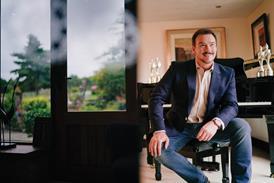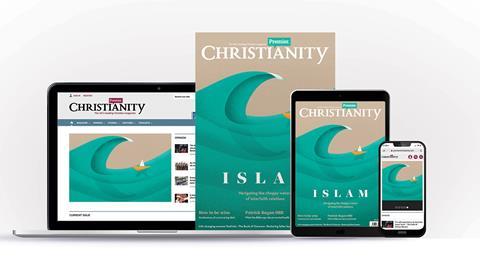
The irate Folden yelled, ‘How can you desecrate my Lord?’ as she tore into the painting. Within minutes she was arrested, and was photographed wearing a T-shirt emblazoned with the caption: ‘My Saviour is tougher than nails!’
The painting targeted for the attack caused national controversy. Fox News gave extensive coverage to the reactions from some local Christians who were incensed about what they saw as a ‘blasphemous, pornographic work’. And the image was certainly unsettling. Two men, one of them looking Christ-like, engage in a sex act. Placard-waving protesters gathered outside the museum. The artist was barraged by hundreds of vitriolic emails from outraged Christians ? some of which, incredibly, included death threats. Stanford University was forced to hire security to protect the beleaguered Chagoya. And then a local pastor, Jonathan Wiggins, received an email from one of his congregation,demanding that he add his voice.
After prayer, Wiggins decided to take another, riskier route. He emailed Chagoya with a warm message that can be summarised like this: ‘Tell me more.’ ‘I told him that I didn’t want to debate him, but just hear him,’ said Wiggins. ‘I let him know that, whatever his response, we would be praying for him to be blessed every day of his life.’
A remarkable series of email exchanges followed. The artist explained that the character portrayed in the work was not Jesus at all, but was an iconic portrayal of the Church. His painting was a response to the outrage of the Catholic paedophile scandals, where, as he put it, ‘the spiritual has been corrupted. Something so precious got corrupted.’
The conversation continued, the two became friends, and when Wiggins shared the emails ? with permission ? he received a standing ovation from his congregation. He had previously discussed his dialogue with the deacons of the church who, with tears, insisted that he was doing the right thing. Wiggins was relieved and grateful for their wholehearted support. ‘They said that this is what Jesus would do. Go for it!’
The story speaks to us when we are tempted to react rather than respond. We rush to a rant, rather than reaching out for dialogue. When we feel that others are being spiteful, we respond with spite. But Wiggins’ example shows us that everyone has a story. That doesn’t necessarily legitimise what they do or how they behave, but as we listen and offer unexpected friendship, we may come to understand why they feel as they do. The softly spoken enquiry, ‘tell me more’ can be a winsome invitation that can engage rather than alienate.
In a statement to his congregation, Wiggins clarified his motives for reaching out to Chagoya. ‘Of course, as a Christian, I’d love to see him come to Christ. But whatever his response is, I’ll be proud and honoured to have him as a friend for the rest of my life.’ And Wiggins invited the artist to create another painting, one that actually portrayed Jesus, and did so in a way that captures the beauty of his love. Chagoya asked the minister to offer some advice about how he should paint Jesus, and then later wrote, ‘I see him in the beautiful descriptions of Christ that you sent me.’ A stunning portrait (pictured) now hangs in the church building, a gift to the church from the artist. A lifelong friendship has been forged. An artist has discovered a new vision, not only of Jesus, but also of his Church. And a congregation has learned to demonstrate resilient love ? a love that is truly tougher than nails.
This month Jeff will be speaking in Oklahoma, where some people eat the body parts of animals that should never be eaten, let alone deep fried. Jeff will be consuming large quantities of celery.




























